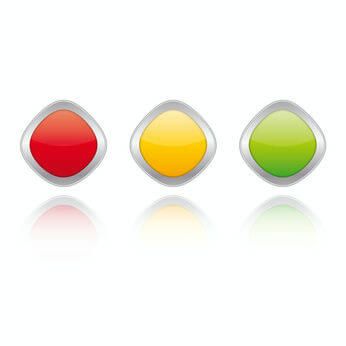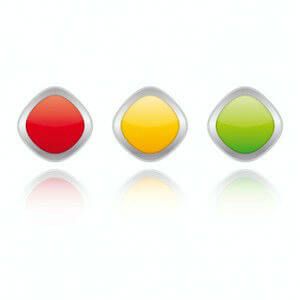
Food labels and nutritional information can be confusing, that is all there is to it. While many restaurants gladly provide customers with nutritional information, few have the ability to make sense of the information in a way that helps us make an informed and healthy decision about what to eat. The garble on back of take-out packages often leaves customers dizzy.
Many people just don’t want to take the time to read through the information and just make an”educated” guess about which food may be the healthiest. If only there were an easier way.
Investigators at Massachusetts General Hospital state that they may have found that way. A simple color-coded label system seems to provide just the right amount of information to help people make better choices.
The results of this labelling study were published in the October issue of Preventative Medicine. Red, green and yellow “traffic light” labels were used in a hospital cafeteria to indicate the nutritional quality of items. Customer surveys were taken before the implementation of the study and after to help assess the effectiveness of the simple label system.
Results from the study suggest that simple colored labels are an effective way to convey information to the consumer and that their use actually resulted in people making better food choices.
The label system used in the cafeteria broke food items down into three groups, the green group, of course, consisted of the healthy items such as fruits, vegetables, lean meats, etc. The yellow group included less healthy options and the red were items with little or no nutritional value.
The use of signs throughout the cafeteria encouraged customers to consider green items the most and discouraged the purchase of red items. These signs were put in place three months before the actual study period began to start to give customers a visual clue of what was to come.
Before the color coded labels were introduced, 204 customers completed a survey. They were asked if they noticed any nutritional information in the cafeteria or on food labels, which factors motivated their purchase, how often they consider nutrition information before making a purchase and how often they selected food because it was a healthy option.
Once the traffic light labels were introduced, consumers were asked if they had noticed the labels and if so, did they influence their purchase. Before the labels were introduced 46% of customers surveyed noted that health and nutrition were important factors in their food decisions.
After the labels were put in use 61% of customers indicated that nutrition was a factor in their decision. Those that looked at available nutritional interest doubled from 15% to 33% and those that reported seeing the new labels bought more green items and fewer red items than those who indicated they did not see the labels.
Research leaders were confident, after this study, that labels that are easy-to-read and understand are an effective tool in helping people make better food choices. In addition, peer pressure or stigma may also play a role.
If everyone in line at the cafeteria sees you are buying all red items you may feel driven to pick up a few green items to at least balance the red ones out, especially if your colleagues are checking out what you are buying (and what you look like).
During the second phase of the study, food items were rearranged with healthy items placed at eye level and red items placed lower in refrigerators. This increased the sales of green items and decreased the sale of red items.
 This easy-to-implement system is now in place in all Massachusetts General Hospital food locations and is one which could be adopted in other food service locations without much cost or effort.
This easy-to-implement system is now in place in all Massachusetts General Hospital food locations and is one which could be adopted in other food service locations without much cost or effort.
Making healthy food choices can often be confusing, a system such as this may be just what is needed to encourage people to think before they eat!
-The Alternative Daily
Sources:
http://www.eurekalert.org/pub_releases/2013-10/mgh-li101713.php

